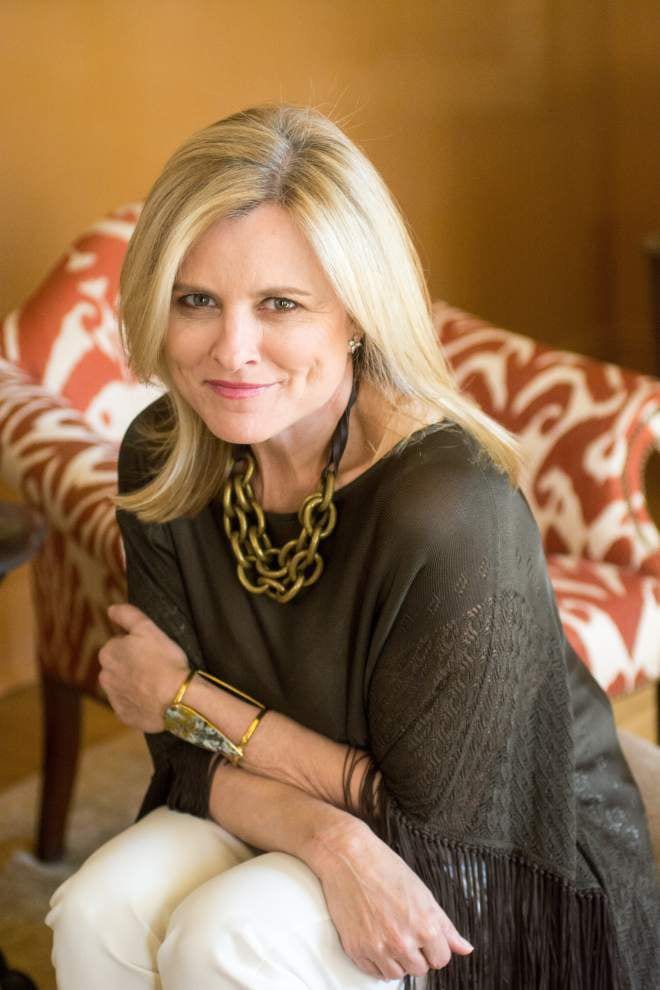The following interview series and analysis was conducted by Callie Nelson, an Arts Entrepreneurship student at Southern Methodist University, Meadows School of the Arts. The goal of this project was to assess if creative entrepreneurs typically start with a business plan and if they think they are necessary.
Cabell Gorman is both the founder and owner of the Cabell Gallery, located in Lexington, Virginia, and is also an avid painter. Her works are sold in her gallery and online at cabellgorman.com. However, the Cabell Gallery was not her first business. Cabell’s entrepreneurial career began as an owner and operator of a candle manufacturing company, “Candles by Cousins.” Cabell received her BS in Art and Sociology from Hollins University, so through the interview, she shared that she always wanted to do something with her passion for art and painting.
Did you have a business plan when you started Cabell Gallery?
I did not have a formal business plan when I opened the Gallery. I did, however, research art galleries and ideas. I prepared an operating budget on how much it would cost to run the Gallery, which included: marketing materials, employee payroll, internet, phone, taxes, bookkeeping, packaging, social media, and Artists Shows, to name a few details that I needed to address before opening.
My original concept was for the brick-and-mortar store location to give credibility to a much larger online presence. This idea turned out to be a failure. Ironically, while my original concept failed, the brick-and-mortar gallery has been a huge success. We roll a lot of art through this little space.
Do you think business plans are necessary for entrepreneurship?
I do not think it is necessary to have a developed business plan; however, I think it is imperative that you have a good direction and fully thought out ideas.
Besides having talented creative artists, the artists must also have a basic understanding of business for a gallery to be successful.
I have two clients: the artist and the potential buyer. The ones that are most successful with me trust me and allow me to represent them and make decisions on their behalf. They know and believe that I have their best interest at heart.
What three pieces of advice can you offer developing arts entrepreneurs
The number one thing that has made my Gallery successful is customer service. We go through great lengths to make sure our clients enjoy their experience in the Gallery. We do not push sales. For example, Washington and Lee students often visit the gallery during exam time. The Gallery is located next to a coffee shop, and students come in and ask if they can just clear their head and look at some beautiful art. On many occasions the students return with their parents to “look at art,” and lots of paintings go home after this. The second piece of advice is to not give up. Failure is the driving force behind success. Lastly, be flexible. Follow the market and the direction your client may take you. You may think you have researched what the target market wants, but trends change, so you must be able to adapt to the client’s needs.
I interviewed Jane Scott Hodges, who is the founder and owner of Leontine Linens and the author of “Linens: For Every Room and Occasion.” Jane Scott began her business in the guest room of her house on Leontine Street in New Orleans in 1996. When asked, “Did you have a business plan when you started your business?” Jane Scott replied, “I did not have a business plan. I was only going sell linens until I had a family and then I planned to be a full-time mom! Little did I know Leontine Linens would be my first-born baby!”
In class, we often talk about pain points and how entrepreneurs seek to solve pain points when creating businesses. Jane Scott shared an anecdote of how her career at Leontine Linens began, all stemming from her personal pain point. She said, “I could have never guessed that this would become the career it has for me when I was a young bride looking for linens I could not find!” Consequently, she decided to fix the problem herself. Jane Scott has always been passionate about linens and design, but her business truly took off because she “saw a niche for specialty monogrammed linens. Stores certainly offered a similar product, but no one was focused on monogramming at the time. I found a workroom with the unique ability to craft one piece at a time, by hand, the old-fashioned way!” She wanted to make linens a bigger decision than just being an afterthought.
Even though Jane Scott did not have a formal business plan at the start of her business when asked, “Do you think business plans are necessary for entrepreneurship?”, she replied, “I think discipline and a business plan is certainly a good idea. I had a driving force, someone who believed in me and knew I was on to something. This someone also had an MBA!”
Since its inception, Leontine Linens has been featured in major magazines such as House Beautiful, Southern Living, Veranda, Architectural Digest, Town & Country, and Vogue. Jane Scott has become an icon for interior designers and her exquisite, hand-stitched pieces are featured around the country. When asked, “What three pieces of advice can you offer developing arts entrepreneurs?” She said, first, “Believe in your product and what you are selling.” Second, “Service is key. Treat people as you would like to be treated. I do not ever sell something to someone who does not want it. Don’t force a sale. That person will never love it if they feel to have been upsold.” Lastly, “customer experience. I am not selling you a pillowcase. I am selling you an experience. I want the process to be not only fun but educational. I love learning from my clients, and the more I know about them, the better I can help them create the linens they need to enhance their life!”
Melissa Rufty is the current founder and owner of MMR Interiors and co-founder and co-owner of antique shop, Malachite Home. Interestingly, interior design was Melissa’s second career-path. She graduated from Tulane with a BBA in Marketing in 1985 and worked in the Advertising and Marketing fields. When asked, “Did you have a business plan when you started your business?”, Melissa replied, “In terms of a financial business plan, I did not. I started with a business strategy, however. I did not graduate with a degree in interior design so I decided to focus my business start-up efforts on niche design.” Her first company, Lilliput, Fanciful Spaces for Children, was a high-end design firm that designed children spaces such as teen rooms, playrooms, and nurseries. This company was named after her middle-child, Lilly. Melissa shares, “It was a great way to have a “soft-opening” or test the waters to see how much time and overhead would be needed. It was also a great way to learn the ropes without the responsibility of taking on a major project.” Lilliput eventually turned into MMR Interiors as Melissa began accumulating more projects.
When asked, “Do you think business plans are necessary for entrepreneurship?”, Melissa replied, “I do think business plans are necessary, especially if it will be your only source of income. I also think there are certain risks that you need to take as an entrepreneur that might not be in a more conservative plan.” As we discuss the concept of “you have to spend money to make money” in class, Melissa shared her logic on risk-taking, which ultimately gave her more traffic and led her to expand her business. She explained, “I was working out of my house and an office space opened up on Magazine Street. This move looked like a financial stretch, but I knew that if I could get more visibility, the move would pay for itself over-and-over again. I think good entrepreneurs have the innate ability to have a plan, but they must be open to taking calculated risks in order to be successful.”
I interned for Melissa the summer of 2014, the same summer Malachite Home opened. Melissa has been a role-model to me and has truly influenced my passion for interior design. I have followed in her footsteps, as I have also pursued a BBA in Marketing. Therefore, when I asked her, “What three pieces of advice can you offer developing arts entrepreneurs?”, I took her answers to heart. First, she said, “Do what you love and it will never feel like work.” Second, “Try to always view your business from the end-user perspective. Think about how your business or product makes a difference to the client. You will always win if you are end-user focused.” Lastly, “Think about how you would like to be scheduled, how you would like to be communicated with and how you would like to bill.” This last piece of advice correlates with the customer relationship part of the Business Model Canvas.
Interview Analysis by Callie Nelson:
Overall, this interview process was eye-opening and helped me understand all aspects of what goes into starting a business.
All three of the creative entrepreneurs I interviewed did not have business plans when they started their businesses. Ironically, two out of the three arts entrepreneurs believed that business plans are necessary for entrepreneurship. If those two were to start their businesses from scratch with a more solid idea of how their businesses would eventually evolve, they would have probably devised business plans before opening. Even though all three creative entrepreneurs claim they did not have a formal business plan when they began, I believe all three had elements of a business plan. They all had a solid idea and passion in their industry, which fostered their motivation to begin the business in the first place. For example, Cabell had an operating budget planned, which she gained from research about similar galleries; Melissa had a business strategy and focused her first company on niche design and then expanded after gaining more recognition and clients; Jane Scott had a unique idea that stemmed from a personal pain point, and she luckily had supporters who became her key resources.
The third question of the interview asked, “What three pieces of advice can you offer developing arts entrepreneurs?” This was personally my favorite question because I got more in-depth answers than the other questions, and the tone of the entrepreneurs’ voices seemed excited to give me advice. From the advice given by the creative entrepreneurs I interviewed, I discovered a couple of common themes between them. The first was the need for customer relationships and customer experience. In niche markets, such as small galleries, boutique high-end interior design firms, and hand-stitched linens, customers are paying a large sum of money for the product; therefore, in all three industries, it is important to give them an experience and develop relationships with the customers so they will return. Both Cabell and Jane Scott explicitly mentioned never to force a sale, and Melissa honed in on being end-user focused. The second overarching theme was to love what you do and believe in yourself. Passion and confidence in your work will ultimately bring you long-term success and will motivate you to want to go to work each day. Just as we discussed in class, it is necessary to not only be talented, but to be passionate and love the work you do, and that will keep you motivated even if your business fails or does not make a profit in the first few years.
Throughout high school and college, I have often been told that it is more common than not for one’s career path to change. However, I kind of ignored this because ever since I was sophomore in high school I have always wanted to be an interior designer, which I still plan to pursue as I want to attend graduate school after graduating from SMU. However, this interview process made me realize that both Melissa and Cabell had other careers and business ventures prior to their current business.







